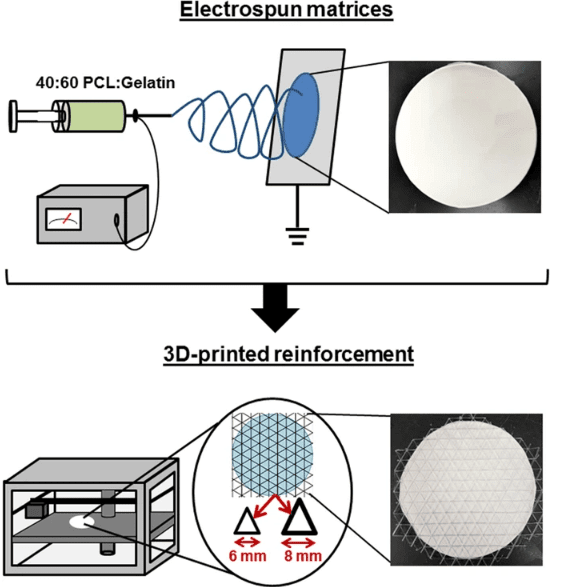In the recently published ‘ 3D printed mesh reinforcements enhance the mechanical properties of electrospun scaffolds ,’ US researchers explore the use of tissue engineering structures for both regeneration and repair, using innovative materials to strengthen mechanical properties.
.
As research continues regarding scaffolding in clinical applications such as repair of the bladder or ligaments or grafting for bone or skin, scaffolds are being 3D printed and employed more often to mimic the extracellular matrix, scale up structures, and provide good cell adhesion and movement.
.
“To improve biocompatibility, methods have been developed to incorporate endogenous ECM molecules and/or growth factors to promote cell differentiation, survival, and/or proliferation,” state the researchers. “However, one of the major disadvantages of electrospun scaffolds is that they have relatively poor mechanical properties (low strength and stiffness, high ductility) compared to many of the tissues they are designed to heal. This limits their use in applications […]
Case Study: How PepsiCo achieved 96% cost savings on tooling with 3D Printing Technology
Above: PepsiCo food, snack, and beverage product line-up/Source: PepsiCo PepsiCo turned to tooling with 3D printing...





0 Comments